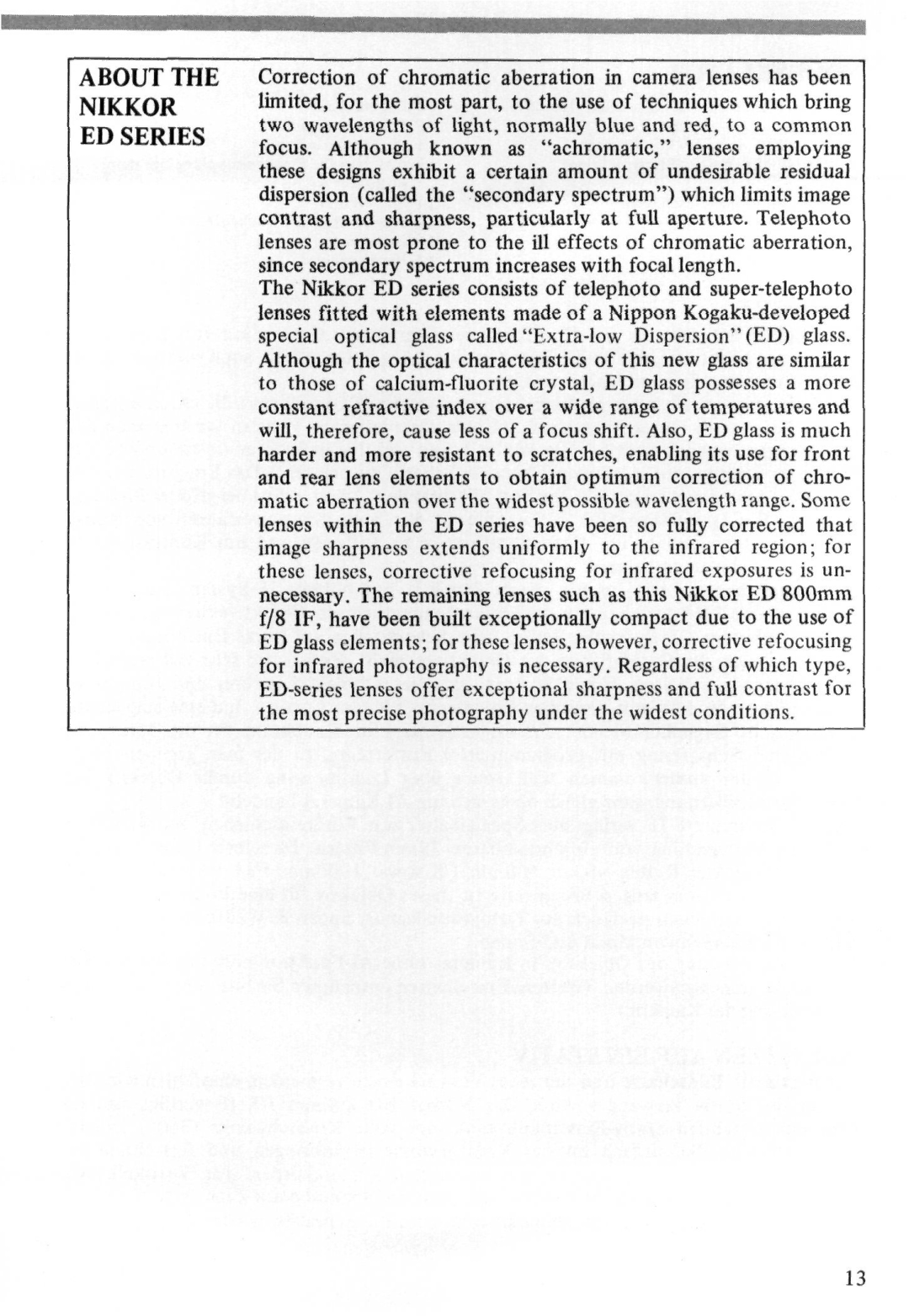ED specifications
Nikon ED (Extra-low Dispersion) optics represent a significant advancement in lens technology, specifically designed to enhance image quality by reducing chromatic aberration and improving color accuracy. These specialized glass elements are utilized in various Nikon products, including cameras, binoculars, and telescopes, making them a cornerstone of Nikon's optical engineering.One of the primary features of Nikon ED glass is its ability to minimize the dispersion of light as it passes through the lens. Traditional glass can produce various wavelengths of light at slightly different focal points, leading to color fringing and a loss of sharpness in photographs. By incorporating ED glass, Nikon lenses achieve better focus across the color spectrum, resulting in more precise, vibrant images with greater detail.
The use of Nikon ED glass also enhances contrast and brightness. The superior optical properties of ED elements allow for increased light transmission, ensuring that images maintain their vibrancy even in challenging lighting conditions. This capability is particularly beneficial for wildlife and landscape photographers who often work in varied environments.
Another hallmark of Nikon ED technology is its durability. Lenses equipped with ED glass are typically constructed with robust materials, making them resistant to the rigors of outdoor use. Weather-sealed designs further protect against elements such as dust and moisture, ensuring reliable performance in a wide range of conditions.
In addition to its optical benefits, Nikon ED technology also incorporates advanced coatings, such as anti-reflective coatings, to reduce lens flare and ghosting. This enhancement allows for clearer, more defined images, particularly when shooting in backlit or high-contrast situations.
Nikon's commitment to precision engineering is evident in the meticulous design and manufacturing processes involved in creating ED lenses. Each lens is crafted with stringent quality control measures, ensuring that every product meets Nikon's high standards for performance and reliability.
In summary, Nikon ED technology exemplifies the brand's dedication to delivering superior optical performance. With its unique ability to counteract chromatic aberration, enhance light transmission, and withstand various environmental conditions, Nikon ED lenses are a preferred choice for photographers seeking unparalleled image quality and durability in their optical equipment.

